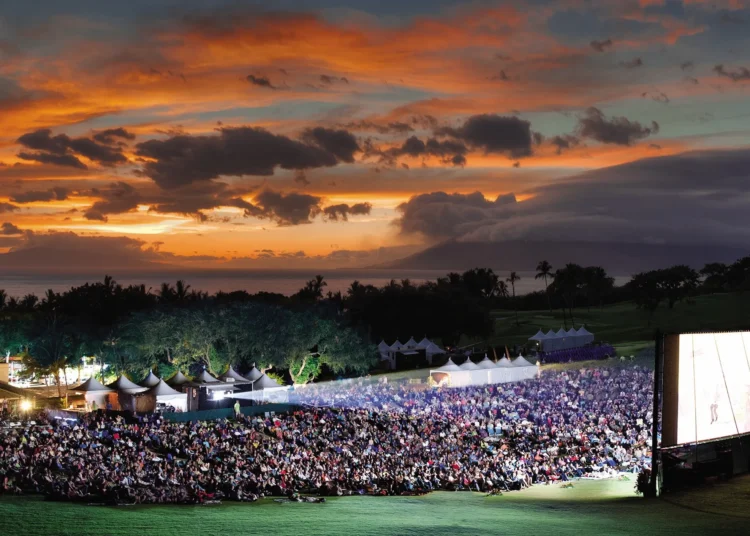Unveiling the Curtain: The Journey of a Film Submission
Embarking on the film festival circuit involves navigating a structured process, balancing creativity with deadlines and fees. Let’s explore what this journey typically entails for filmmakers.
1. Understanding the Submission Structure
Film festivals like the Austin Film Festival employ a tiered submission system, which includes various deadlines and associated fees. This structure is designed to manage the high volume of submissions while providing filmmakers with multiple opportunities to present their work. The fees are structured to encourage early submissions, with costs increasing as deadlines approach.
2. The Importance of Deadlines
Meeting deadlines in the film submission process is more than a mere formality—it serves as a cornerstone for effective festival planning and professional credibility. Adhering to each submission cutoff ensures that your work is reviewed under optimal conditions, avoids unnecessary administrative hurdles, and demonstrates respect for the festival’s operational timelines.
3. Fee Structure and Categories
The submission fees often vary based on the type of project. Typically, feature films, short films, and digital series have different fee scales, reflecting variations in screening time and judging criteria. Examining the fee structure can help filmmakers decide the most strategic time to submit their work, balancing cost considerations with their readiness to present the film.
4. Digital Submission Process
Submitting to film festivals today is almost exclusively a digital affair. Platforms like FilmFreeway, or the festival’s own online portal, facilitate the submission process. This digital approach streamlines entries, making it easier for filmmakers worldwide to participate.
5. Post-Submission Expectations
After submitting, filmmakers can expect to wait several months for placement notifications. This waiting period allows festivals to thoroughly review each submission and make informed selections. While anticipation can be high, understanding the timeline helps manage expectations and allows filmmakers to prepare for potential screenings or further opportunities.
The Art of the Premiere: What Makes It Special?
Discover the magic behind film premieres and why they’re so important for filmmakers and audiences alike at events like the Sundance Film Festival.
1. A Launchpad for New Voices
Film premieres serve as a crucial launching pad, especially for emerging talents. These events are more than just screenings; they’re carefully orchestrated opportunities for filmmakers to introduce their work to industry insiders and the public, potentially changing their careers overnight. With a significant portion of feature film directors being first-timers, premieres provide an invaluable platform for these new voices to be heard.
2. The Premiere Experience
Held in iconic venues across Park City and Salt Lake City, premieres are designed to maximize discovery and engagement. It’s a chance for audiences to connect with the film on a personal level, and for filmmakers to gauge reactions firsthand. This interaction is vital for building momentum and creating a lasting impression.
3. Generating Buzz and Recognition
Industry professionals recognize premieres as essential for generating buzz. The anticipation surrounding these world debuts creates networking opportunities and sets the stage for potential distribution deals. For many, securing a premiere slot at a major festival can be transformative, turning a simple submission into a standing ovation.
4. The Numbers Behind the Narrative
The Sundance Film Festival serves as a prime example of how premieres can elevate a film’s profile. The high percentage of first-time directors underscores the festival’s commitment to showcasing fresh perspectives. This focus on new talent is what makes the premiere experience so vital for the film industry as a whole.
Behind the Scenes with the Jury: Award Criteria Explained
Discover the inner workings of film festival judging, where originality meets impact, and artistic vision takes center stage.
1. The Academy Award® Qualifier
The Dallas International Film Festival (DIFF) has reached a milestone, now recognized as an Academy Award® Qualifying Festival. This distinction elevates the festival’s importance, placing it among a select group of U.S. events that can directly influence the Oscar® nominations. Films that receive the Grand Jury Prizes at DIFF are eligible for consideration by the Academy, provided they meet all other requirements.
2. Grand Jury Prizes: The Path to Oscar®
DIFF awards Grand Jury Prizes in key short film categories: Best Animated Short, Best Documentary Short, and Best Narrative Short. Winning one of these prizes can be a significant step for filmmakers, potentially opening doors to the most prestigious awards in the industry. The period of eligibility runs from October 1, 2024, to September 30, 2025, creating a clear window for filmmakers to aim for.
3. A Diverse and Inclusive Program
DIFF’s programming reflects a commitment to diversity, showcasing films across genres like Music, Sports, World Films, LGBTQIA+, and Environment/Sustainability. This wide-ranging approach ensures that the jury considers a variety of perspectives and stories, aligning with industry trends that prioritize inclusivity.
4. Judging Criteria: Originality and Impact
The jury members at DIFF evaluate films based on a well-defined set of criteria. Originality is key, alongside the quality of storytelling and artistic achievement in areas like direction, cinematography, and performance. Furthermore, the social impact or relevance of a film to contemporary issues plays a crucial role in the decision-making process, ensuring that the recognized films contribute meaningfully to broader cultural conversations.
5. Setting the Standard for U.S. Festivals
The structured approach used by DIFF, emphasizing transparency and adherence to Academy rules, is increasingly becoming a standard for leading U.S. film festivals. As competition for Oscar® eligibility intensifies, festivals are adopting rigorous evaluation processes to ensure that the films they recognize truly represent the best in cinematic art.
From Silence to Applause: Mastering Q&A Sessions
Explore how U.S. film festivals are revolutionizing audience engagement through dynamic Q&A sessions, fostering deeper connections between filmmakers and viewers.
1. The Rising Importance of Q&A Sessions
In the vibrant landscape of U.S. film festivals, Q&A sessions have emerged as a pivotal element, significantly boosting audience engagement and facilitating crucial industry networking. Events like the City of Angels Film Festival actively integrate these sessions, acknowledging their power to transform passive viewing into active participation.
2. A Platform for Filmmakers
These sessions provide a unique stage for directors and creative teams to connect directly with audiences. Following screenings, filmmakers share their creative journeys and respond to questions, enriching the overall viewing experience. This direct interaction not only captivates the audience but also offers filmmakers a valuable platform to exhibit their talent and forge connections.
3. Championing Diversity and Inclusion
Recognizing the importance of diverse perspectives, U.S. film festivals are increasingly leveraging Q&A sessions to amplify a wide range of voices. By providing a platform for underrepresented groups, these festivals promote inclusivity and ensure that diverse narratives are heard and valued within the film industry.
4. Rewarding Innovative Expression
The commitment to fostering dynamic interaction is further underscored by the fact that some leading film festivals now evaluate and reward innovative expression during Q&A sessions. This recognition highlights the value placed on engaging and thought-provoking dialogue, encouraging filmmakers to push boundaries and explore new avenues of communication.
5. Driving Industry Progress
The evolution from silence to applause signifies a profound shift in the way U.S. film festivals approach audience engagement. By prioritizing open dialogue and public participation, Q&A sessions have become instrumental in propelling industry progress and fostering cultural resonance, solidifying their position as a cornerstone of the film festival experience.
Q&A
Question 1: What are the different submission stages and associated fees for feature films, short films, and digital series at the Austin Film Festival?
Answer: The Austin Film Festival uses a tiered submission system with varying deadlines and fees. For feature films, fees range from $65 (Early Bird) to $95 (Extended). Short films range from $60 to $90, and digital series from $50 to $65, with fees increasing as deadlines approach (March 25th, May 20th, June 24th, and July 10th, 2025, respectively).
Question 2: Why are film premieres, such as those at Sundance, considered so important for filmmakers and their films?
Answer: Film premieres, especially at prestigious festivals like Sundance, serve as crucial launching pads, particularly for emerging talents. They offer opportunities to showcase work to industry insiders and the public, potentially leading to career-changing deals and recognition. The premiere experience itself generates buzz and creates networking opportunities, transforming a submission into potential distribution deals and widespread acclaim.
Question 3: What criteria does the Dallas International Film Festival (DIFF) jury use to evaluate films for its Grand Jury Prizes, and what is the significance of winning one?
Answer: DIFF’s jury evaluates films based on originality, storytelling quality, artistic achievement (direction, cinematography, performance), and social impact or relevance to contemporary issues. Winning a Grand Jury Prize at DIFF is significant because it qualifies the film for consideration for the Academy Awards (Oscars®), provided it meets all other requirements.













